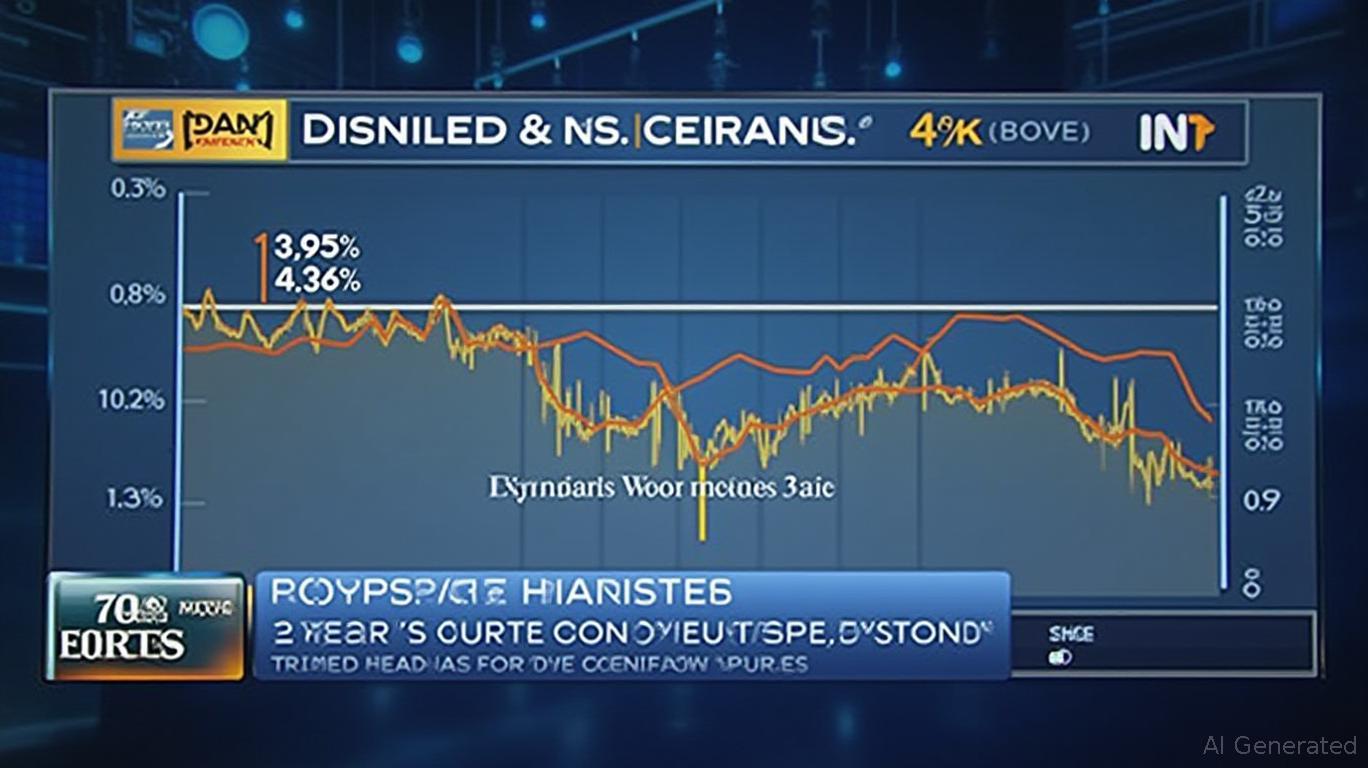Positioning for a Fed Pivot: The Treasury Yield Signal in a Slowing Labor Market
The U.S. labor market is flashing amber. The May 2025 jobs report, with nonfarm payrolls rising by just 125,000—a sharp slowdown from the revised April figure of 177,000—coupled with a stagnant unemployment rate at 4.2%, marks a critical inflection point. This report, alongside rising long-term unemployment and tepid wage growth, has amplified expectations of a Federal Reserve pivot toward rate cuts by year-end. For investors, the opportunity lies in parsing the yield curve's message and capitalizing on Treasury market dynamics.
The Labor Market's Softening: A Catalyst for Fed Policy Shifts
The May jobs report underscores a cooling labor market. Key metrics include:
- Payroll Growth: The 125,000 jobs added were the weakest since early 2023, with declines in manufacturing and education sectors.
- Long-Term Unemployment: The number of jobless individuals out of work for over 27 weeks surged to 1.7 million, or 23.5% of the unemployed.
- Wage Growth: Annual wage gains for private-sector workers slowed to 3.7%, while ADP data highlighted a divide between stagnant wages for job stayers (4.5%) and modest gains for switchers (7%).
These trends signal that the Fed's tightening cycle—now in its third year—is finally biting. With trade tensions and elevated uncertainty weighing on hiring, the labor market's resilience is waning.

The Yield Curve's Warning: A Fed Pivot Is Imminent
The Treasury market is already pricing in a Fed pivot. The 2-year/10-year yield spread, now inverted at -0.47%, reflects a stark divergence between short-term and long-term rates. This inversion—a reliable recession indicator with a 6–24 month lead—has narrowed further in June, as markets anticipate rate cuts to offset slowing growth.
The Fed Funds Futures market now prices a 50% probability of a rate cut by September and a 70% chance by December. Even Fed Chair Powell's cautious tone—emphasizing data dependency—cannot obscure the reality: the Fed will likely begin easing in 2025 to avoid a sharper slowdown.
Investment Strategy: Capitalizing on Yield Differentials and Volatility
Investors should position for three outcomes:
1. Rate Cuts by Year-End: The Fed's pivot will flatten the yield curve further, favoring long-dated Treasuries.
2. Volatility in Intermediate Maturities: The 5–7 year sector, which often reacts to rate expectations, may offer asymmetric returns.
3. Safe-Haven Demand: Geopolitical risks and recession fears will sustain Treasury demand, even as the Fed eases.
Actionable Plays:
- Buy Long-Dated Treasuries: The 10-year yield at 4.36% (as of June 4) offers a compelling entry point. A cut to 4.0% by year-end could deliver a 9% total return (price appreciation + coupons).
- Short the 2-Year Sector: The 2-year yield, currently at 4.93%, is pricing in hawkishness that may not materialize. A Fed cut could push it to 4.5% by December, a 9% price gain.
- Use Options for Volatility: Selling puts on inverse Treasury ETFs (e.g., TBF) or buying straddles on the 10-year futures contract can profit from widening rate-cut expectations.
Risks to Consider:
- Inflation Persistence: A sudden wage surge or energy shock could delay the pivot.
- Geopolitical Shocks: Trade disputes or geopolitical flare-ups could reignite Treasury buying, compressing yields further.
Conclusion: The Yield Curve's Message Is Clear
The May jobs report has crystallized the Fed's dilemma: tolerate a slower labor market or risk a deeper downturn. The Treasury market is now pricing in a pivot, and investors ignoring this signal do so at their peril. By focusing on long-dated bonds, shorting the front end, and harnessing volatility, investors can turn the Fed's eventual easing into tangible gains.
In a world where every basis point matters, the yield curve is the ultimate guide. Follow its signals—and the Fed's footsteps—to navigate this pivotal year.

Comments
No comments yet